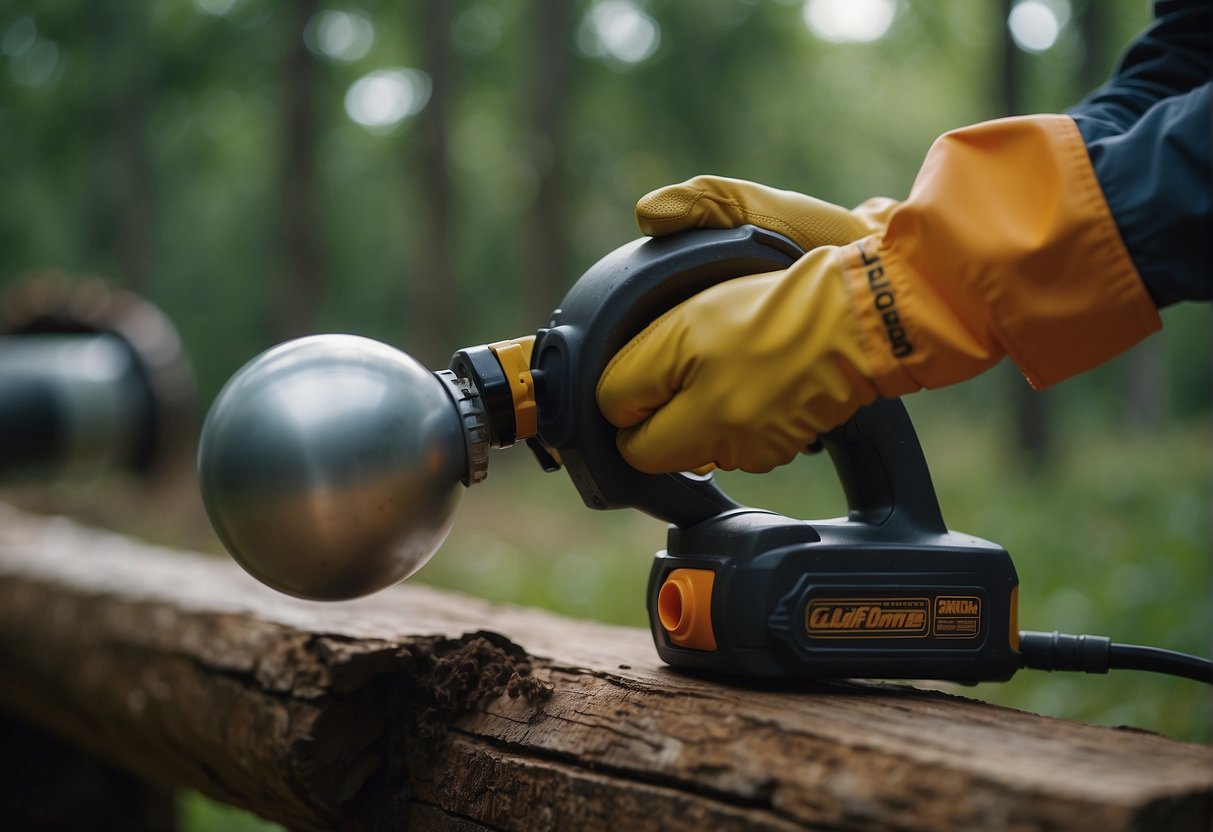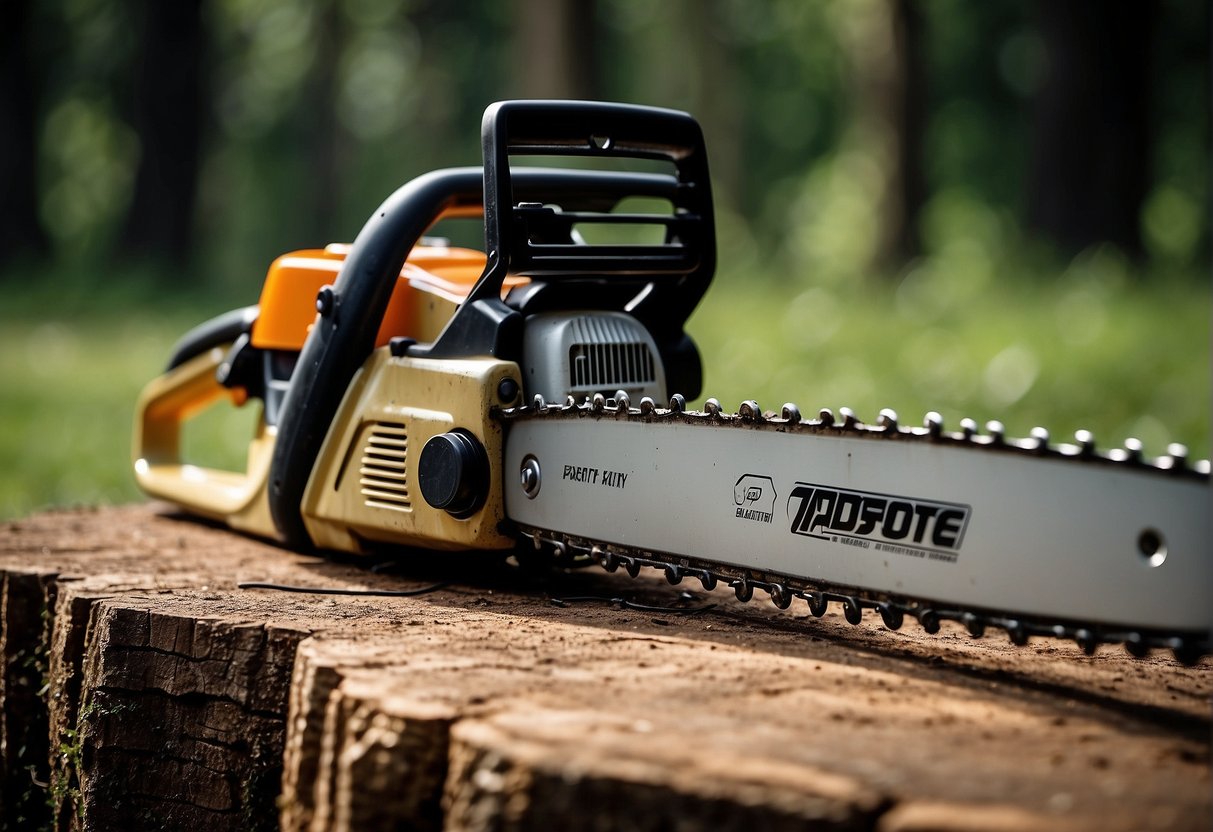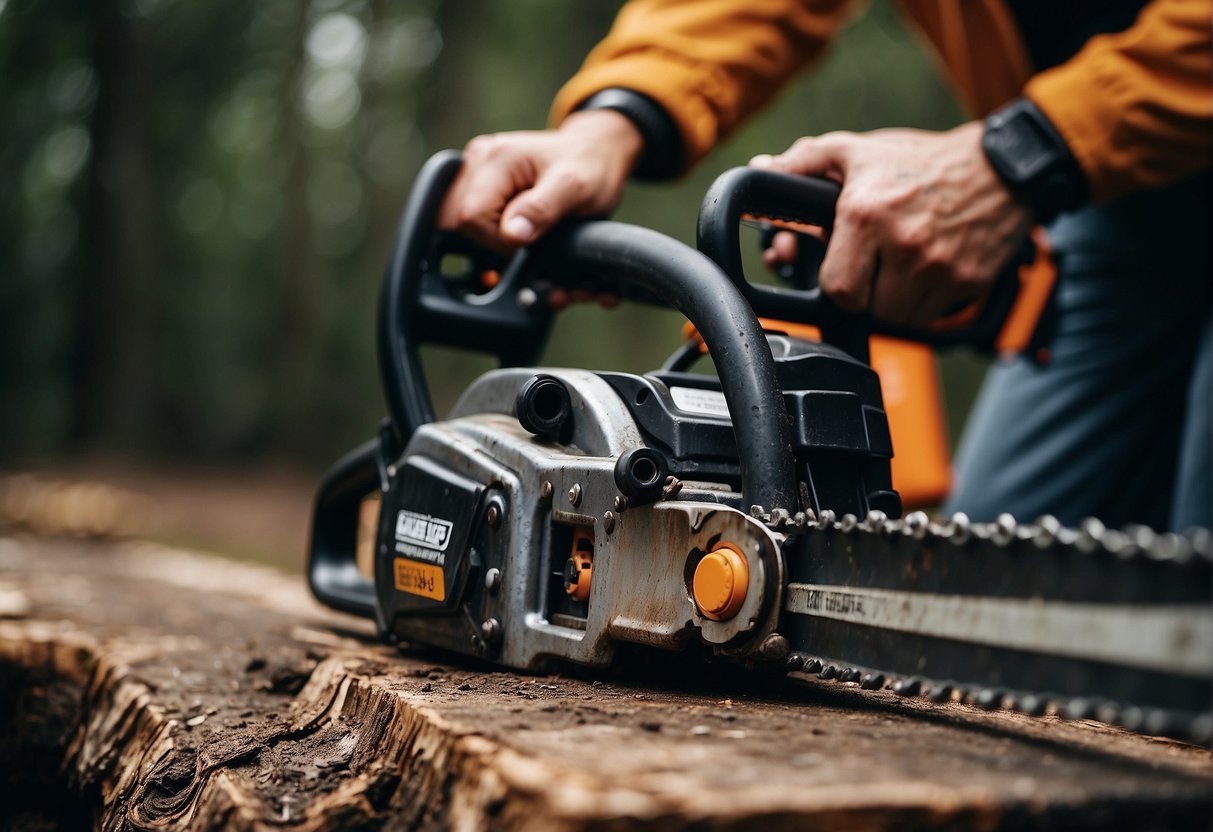Starting a chainsaw can be a daunting task, especially if it’s your first time or you don’t have the physical strength to pull the cord. Fortunately, there are alternative methods to start a chainsaw without a pull cord. In this article, I will share some techniques and tips on how to start a chainsaw without a pull cord that will help you get the job done with less effort and more confidence.
Understanding your chainsaw is the first step to starting it without a pull cord. You need to know the different parts of the chainsaw, their functions, and how they work together. It’s also important to read the manufacturer’s instructions and safety guidelines to avoid accidents and damage to the chainsaw. Once you have a good understanding of your chainsaw, you can proceed to the pre-start safety checklist to ensure that you are ready to start the chainsaw safely.
Alternative starting methods are available for those who don’t have the physical strength to pull the cord. These methods include using a drill, a compression release, or an electric starter. Each method has its pros and cons, and it’s important to choose the one that works best for you and your chainsaw. With the right technique and tools, starting a chainsaw without a pull cord can be a breeze.
Key Takeaways
- Understanding your chainsaw and following the manufacturer’s instructions is crucial for safe and efficient operation.
- Alternative starting methods such as using a drill or compression release can make starting a chainsaw without a pull cord easier.
- Regular maintenance and proper storage can prolong the life of your chainsaw and ensure it starts smoothly.
Understanding Your Chainsaw
As a chainsaw user, it is essential to understand the key components and types of chainsaws before attempting to start it. In this section, I will briefly explain the different types of chainsaws and their key components.
Chainsaw Types
There are three main types of chainsaws: electric, gas-powered, and cordless chainsaws.
Electric chainsaws are powered by electricity and are ideal for light-duty tasks like pruning or cutting small trees. They are quieter, lighter, and require less maintenance than gas-powered chainsaws. However, they are less powerful and have limited mobility due to the cord.
Gas-powered chainsaws are powered by gasoline and are ideal for heavy-duty tasks like felling large trees. They are more powerful and have more mobility than electric chainsaws, but they require more maintenance and produce more noise and emissions.
Cordless chainsaws are battery-powered and are ideal for light to medium-duty tasks. They are quieter, lighter, and more mobile than electric chainsaws but have limited battery life and less power than gas-powered chainsaws.
Key Components
Regardless of the type of chainsaw, they all have similar key components. These include the chain brake, throttle, rear handle, engine, and power source.
The chain brake is a safety feature that stops the chain from rotating when engaged. It prevents accidents and injuries when the chainsaw kicks back.
The throttle controls the speed of the chain rotation. It is usually located on the rear handle, and you can adjust it with your thumb.
The rear handle is where you hold the chainsaw while operating it. It provides you with stability and control over the chainsaw.
The engine is the power source that drives the chain rotation. It can be either electric or gas-powered, depending on the type of chainsaw.
The power source is the energy source that powers the engine. It can be electricity, gasoline, or battery, depending on the type of chainsaw.
In summary, understanding the types and key components of a chainsaw is crucial before attempting to start it. It helps you to operate the chainsaw safely and effectively, as well as to choose the right chainsaw for your needs.
Pre-Start Safety Checklist
Before starting a chainsaw, it is important to ensure that you are properly equipped and that your work area is safe. Here is a pre-start safety checklist that I follow to ensure that I am ready to use a chainsaw safely.
Personal Protective Equipment
Wearing the right personal protective equipment (PPE) is essential when working with a chainsaw. I always wear the following PPE:
- Gloves: to protect my hands from cuts and abrasions
- Safety glasses: to protect my eyes from flying debris
- Steel-toed boots: to protect my feet from falling objects
- Hearing protection: to protect my ears from the loud noise of the chainsaw
- Pants: to protect my legs from cuts and abrasions
Chainsaw Inspection
Before starting a chainsaw, it is important to perform a maintenance check and inspect the chainsaw for any damage. Here are some things to check:
- Chain tension: make sure the chain is properly tensioned and not too loose
- Fuel and oil levels: make sure there is enough fuel and oil in the chainsaw
- Air filter: make sure the air filter is clean and free of debris
- Spark plug: make sure the spark plug is clean and properly gapped
- Safety features: make sure the safety features, such as the chain brake, throttle lock, and stop switch, are working properly
Work Area Preparation
Preparing your work area is also important for safety when using a chainsaw. Here are some things to consider:
- Safe distance: make sure there is a safe distance between you and any bystanders or obstacles
- Clear work area: make sure the work area is clear of any debris or obstacles that could interfere with your work
- Secure footing: make sure you have secure footing and are on level ground
- Avoid kickback: make sure you are aware of the chainsaw’s kickback zone and avoid making contact with it
By following this pre-start safety checklist, you can ensure that you are properly equipped and that your work area is safe before starting a chainsaw.
Alternative Starting Methods
When it comes to starting a chainsaw without a pull cord, there are a few alternative methods that can be used. These methods include electric start, spring assist, and memory power ignition. Each method has its advantages and disadvantages, and it is important to choose the one that works best for you.
Electric Start
One of the most popular alternative methods for starting a chainsaw without a pull cord is the electric start. This method involves using an electric motor to turn the engine over, rather than using a pull cord. To use this method, you will need to attach an electric motor to the chainsaw’s engine and then turn it on. The motor will then turn the engine over, allowing it to start.
Spring Assist
Another alternative method for starting a chainsaw without a pull cord is the spring assist. This method involves using a spring-loaded mechanism to turn the engine over, rather than using a pull cord. To use this method, you will need to pull back on a lever or button, which will activate the spring-loaded mechanism. The mechanism will then turn the engine over, allowing it to start.
Memory Power Ignition
Finally, another alternative method for starting a chainsaw without a pull cord is the memory power ignition. This method involves using a small battery to power a memory chip, which stores the ignition timing and other important information. When you start the chainsaw, the chip will use this information to ignite the fuel and air mixture, allowing the engine to start.
Overall, there are a variety of alternative methods for starting a chainsaw without a pull cord. Each method has its own advantages and disadvantages, and it is important to choose the one that works best for your needs. With the right technique and ease of use, starting a chainsaw without a pull cord can be a breeze.
Operational Techniques
Cold Engine Start
When starting a chainsaw with a cold engine, it is important to follow the proper steps to avoid damaging the engine. First, check the fuel level and add more if necessary. Next, check the oil level and add more if necessary. Then, turn on the choke and prime the primer bulb until fuel is visible in the bulb.
Once the above steps have been completed, pull the starter cord slowly until you feel resistance, and then pull it quickly to start the engine. If the engine does not start, release the choke and pull the starter cord again. If the engine still does not start, try pressing the decompression valve before pulling the starter cord again.
Warm Engine Start
When starting a chainsaw with a warm engine, the process is much simpler. First, turn off the choke and press the air purge bulb a few times to remove any air from the fuel system. Then, pull the starter cord slowly until you feel resistance, and then pull it quickly to start the engine.
It is important to note that idling a chainsaw for an extended period of time can cause damage to the engine. To avoid this, rev up the engine for a few seconds after starting it to get it up to speed.
By following these operational techniques, you can safely and effectively start your chainsaw without a pull cord.
Maintenance and Storage
Routine Maintenance
As a chainsaw owner, it is essential to perform routine maintenance on your equipment to ensure it runs smoothly and lasts for a long time. Here are some routine maintenance tips to keep in mind:
- Check the chain oil level before each use and top it up as needed. Running the chainsaw without enough chain oil can cause the chain to overheat and wear out faster.
- Check the fuel and oil levels before each use and top them up as needed. Running the chainsaw with low fuel or oil levels can cause the engine to overheat and wear out faster.
- Check the spark plug regularly and replace it if it is dirty or damaged. A dirty or damaged spark plug can cause the engine to misfire or not start at all.
- Clean or replace the air filter regularly. A dirty air filter can cause the engine to run poorly and wear out faster.
Long-Term Storage
If you plan to store your chainsaw for an extended period, it is essential to take the necessary steps to prevent damage and ensure it starts easily when you need it. Here are some long-term storage tips to keep in mind:
- Drain the fuel tank and run the engine until it stops to prevent fuel from gumming up the carburetor.
- Remove the cutting chain and clean it thoroughly before storing it separately.
- Clean the chainsaw thoroughly and let it dry completely before storing it in a dry, cool, and well-ventilated area.
- Apply a light coat of lubricating oil to the cutting chain and bar to prevent rust and corrosion.
- Replace the spark plug and air filter before storing the chainsaw to ensure it starts easily when you need it.
Remember, wearing personal protective equipment such as gloves, eye protection, and hearing protection is essential when operating a chainsaw. By following these routine maintenance and long-term storage tips, you can ensure your chainsaw runs smoothly and lasts for a long time.
Frequently Asked Questions
What alternative methods can be used to start a chainsaw if the pull cord is missing?
If the pull cord on your chainsaw is missing, there are several alternative methods that you can use to start it. One popular option is to use a starting cordless drill. You will need to attach the drill bit to the spark plug, then attach the cordless drill to the starter rope. Make sure the drill is in reverse and pull the trigger until the engine starts. Other options include using an electric start button, a spring-assist mechanism, or a capacity discharge ignition (CDI) system.
Can a drill be utilized to start a pull start engine like a chainsaw?
Yes, a drill can be used to start a pull-start engine like a chainsaw. As mentioned earlier, you will need to attach the drill bit to the spark plug and the cordless drill to the starter rope. Make sure the drill is in reverse and pull the trigger until the engine starts.
How can one convert a chainsaw to an electric start system?
Converting a chainsaw to an electric start system can be a complex process that requires specialized knowledge and tools. It is recommended that you have a professional do the conversion for you. However, if you are experienced with small engine repair, you can find conversion kits online that can help you complete the process.
Is it possible to create a homemade electric starter for a chainsaw?
While it is possible to create a homemade electric starter for a chainsaw, it is not recommended. Creating a homemade starter can be dangerous and may not work as well as a professionally manufactured starter. It is better to purchase a starter from a reputable manufacturer or have a professional install an electric start system for you.
Are there any easy-start chainsaws available that don’t require a pull cord?
Yes, there are chainsaws available that don’t require a pull cord. These chainsaws typically have an electric start system that allows you to start the engine with the push of a button. Some models also have a spring-assist mechanism that makes starting the engine easier.
Why might a chainsaw not have an electric start option, and what are the common workarounds?
Some chainsaws may not have an electric start option due to their design or age. In these cases, common workarounds include using a starting cordless drill, a spring-assist mechanism, or a capacity discharge ignition (CDI) system. It is also important to make sure that your chainsaw is properly maintained and in good working order to ensure that it starts easily.

Hi, I’m Sal Muller of Tooltrip.com. My DIY experience led me to understand essential power tools for home projects. Tooltrip.com guides enthusiasts and professionals in choosing right tools for any job. I provide concise top tool reviews for easier, efficient DIY.




